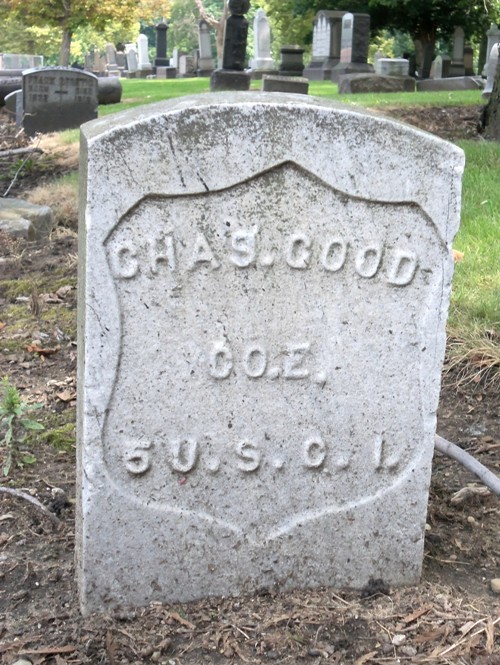Woodland Cemetery

On June 14, 1853, Cleveland's mayor, city officials, clergy, and a few citizens gathered under a shady grove for the dedication of Woodland Cemetery. The flat but tree copious 60-acres used for the new burial ground had been purchased in 1851 and developed by Cleveland's city council to take the place of Erie Street Cemetery. Its name, decided one week before the dedication, originated from a poem about Cleveland by the Scottish poet Thomas Campbell called "Pleasures of Hope." The ground was dug for the cemetery's first burial nine days after its dedication. Since then, Woodland has become the final resting place for everyone from the ordinary citizen to Ohio governors to war veterans.
Woodland's markers are just as varied as the people buried there, adding to the charm and interest of the cemetery. The gravestones are arranged in a rural cemetery style, using the landscape to determine their placement, and creating a park-like atmosphere. These and other features, such as a fountain, a chapel, and a stone gateway, made Woodland an attractive place for Clevelanders to visit. However, its popularity and location as a stop for Cleveland streetcars had also made it a convenient, but temporary, location for illegalities such as prostitution and cadaver hunting.
Two Soldiers' Lots for Civil War soldiers were purchased by the federal government in 1868. These lots do not contain all of the veterans buried in Woodland. Graves belonging to soldiers from every war since 1812, some unmarked, are scattered amongst the graves of civilians. There is even one Confederate soldier among them. Not surprisingly, Civil War soldiers outnumber the other veterans in the cemetery. Out of the 15,600 Cuyahoga County men who were eligible for service during the Civil War, more than 10,000 served in the military. Three monuments have long stood in the cemetery to honor these men: one for the 23rd Ohio Volunteer Infantry was erected in 1865; one for the 7th Ohio Volunteer Infantry was built in 1872; and one recognizing the Grand Army of the Republic was built in 1909. Future presidents Rutherford B. Hayes and William McKinley were in attendance at the dedication of the latter. In 2012, the cemetery added a fourth Civil War monument to honor the 86 black soldiers who are buried there.
Not all of the courageous individuals from that time have monuments or soldier burials at Woodland Cemetery. An example is Sara Lucy Bagby Johnson, a runaway slave who hid in Cleveland. When she was finally apprehended she became one of the last slaves to face charges under the Fugitive Slave Act. A headstone has just recently been given to Johnson, who before had been buried in an unmarked grave. Also buried there is Eliza Simmons Bryant who founded the Cleveland Home for Aged Colored People, and Ohio's first black state senator, John Patterson Green. While visiting and exploring Woodland Cemetery, one can stumble upon these and the graves of other famous politicians, inventors, and Cleveland pioneers.
Audio
Images






